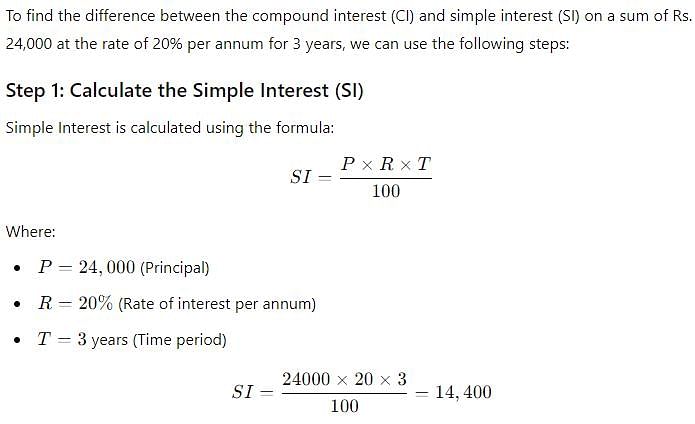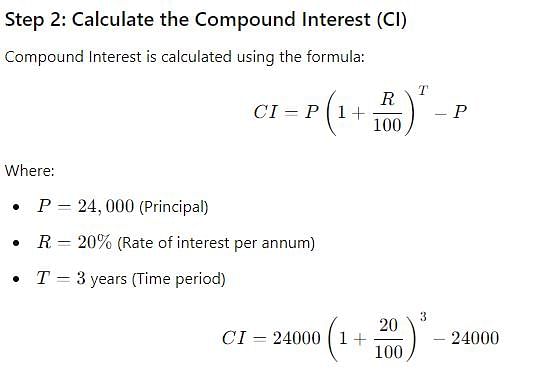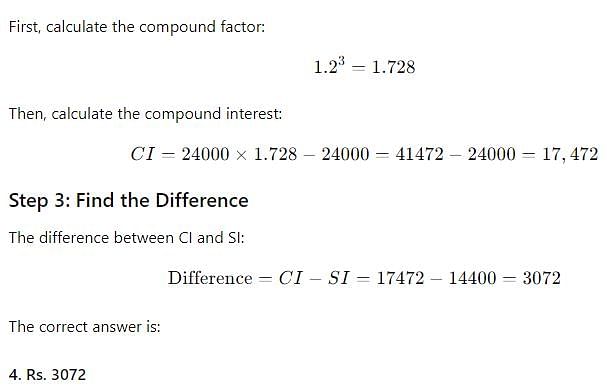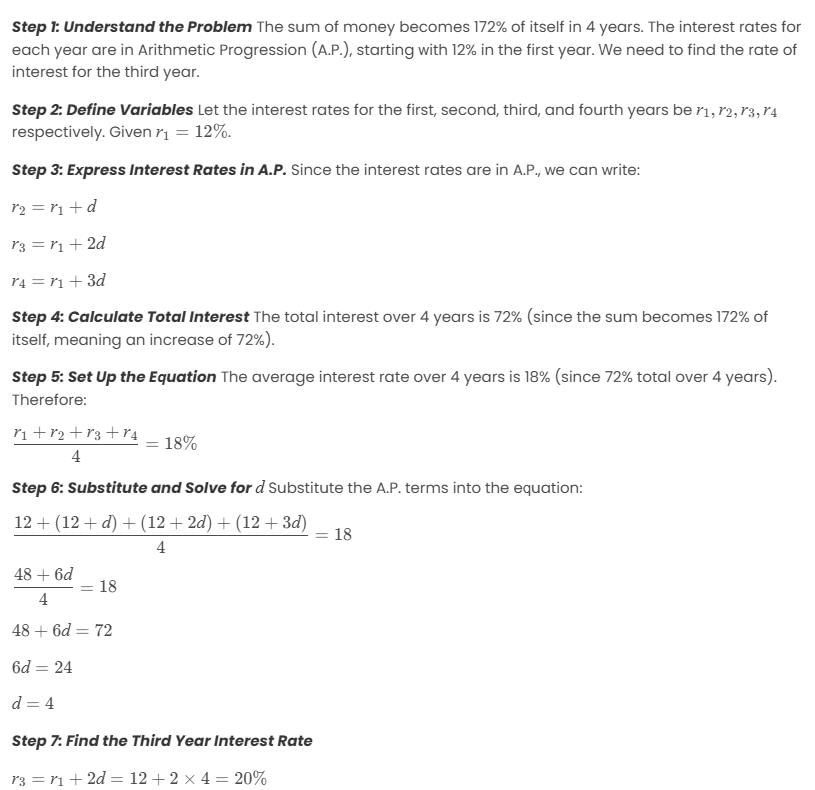MCQ: Compound Interest - 3 - SSC CGL MCQ
15 Questions MCQ Test Quantitative Aptitude for SSC CGL - MCQ: Compound Interest - 3
Ankush invested a sum of Rs. 5000 at compound interest with rates of interest in the first, second and third years being 10%, 20% and 15%, respectively. Amit invested the same sum at compound interest with rates of interest in the first, second and third years being 5%, 10% and 20%, respectively. What is the difference (in Rs.) between the interest obtained by both of them?
Sujata lent out a sum of Rs. 60,000 at the rate of 20% p.a. for 2 years at compound interest. How much more interest she would have earned had she charged the interest half-yearly?
The difference between the simple interest and the compound interest at the rate of 33.33% p.a. for 2 years is Rs. 3600. If 2/3rd of this sum is invested at 15% p.a. compound interest for 2 years, what will be the interest (in Rs.) obtained?
A sum is invested at compound interest of 50% p.a. for four years. The sum of the amount of interest obtained in the first and third years is what percent of the sum of the amount of interest obtained in the second and fourth years?
A sum of money becomes 8 times of itself in 3 years at a certain rate of interest per annum compounded annually. How many times of itself will the same sum of money become at the same rate in 7.5 years?
What will be the difference between the compound interest and simple interest on a sum of Rs. 24,000 at the rate of 20% p.a. for 3 years?
A sum of money becomes 172% of itself in 4 years when the rate of interest is different in different years. The interest obtained in the first, second, third and fourth years are in A.P. If the rate of interest in the first year is 12%, what is the rate of interest for the third year?
Seema invested Rs. 4800 at compound interest of 50% p.a. for 3 years. Pooja invested Rs. x% of 4800 at 150% p.a. compound interest for 3 years. If Pooja got Rs. 300 more interest than Seema, what is the value of x?
A sum becomes 184% of itself in four years when the rate of compound interest was different for different years. The rate of interest in the fourth year was 14.28% p.a. and the amount of interest in the second, third and fourth years was the same. If the interest of the first year was Rs. 450, what was the value (in Rs.) of the sum?
A sum of Rs. 1600 is invested at compound interest for 4 years with different rates of interest for different years. The sum increased by 20% in the first year, 100% in the third year and 25% in the fourth year. If the total interest is 275% of the sum of money invested, what is the sum (in Rs.) of the total interest of the second and third years?
Jeevan borrowed a loan of Rs. 32,000 at a compound interest of 12.5% p.a. for the first 2 years and 10% p.a. for the next 2 years. If he paid Rs. 15,500 at the end of two years, how much interest (in Rs.) he paid in four years?
A sum of money is invested at compound interest for four years when rates of interest for the first, second, third and fourth years are 5%, 8.33%, 14.29% and 11.11%, respectively. If the interest obtained is Rs. 920, what is the value (in Rs.) of the sum invested?
A sum is lent out at the rate of r% p.a. compound interest for 3 years. The amount of interest obtained in the third year is 116.67% of that in the second year. The amount at the end of the third year is what percent more than the amount at the end of the first year?
A sum of Rs. 40,000 is deposited in a scheme which gives a return of 10% p.a. compound interest for 3 years. The interest is compounded yearly for the first and third years and half-yearly for the second year. What is the amount of interest (in Rs.) obtained at the end of the third year?
A sum becomes 150% of itself in 4 years when the rate of compound interest is different in different years. The interest obtained in each particular year is the same. If the rate of interest per annum for the second year is x% and that for the fourth year is y%, what is the value of x : y?
|
314 videos|170 docs|185 tests
|




























































